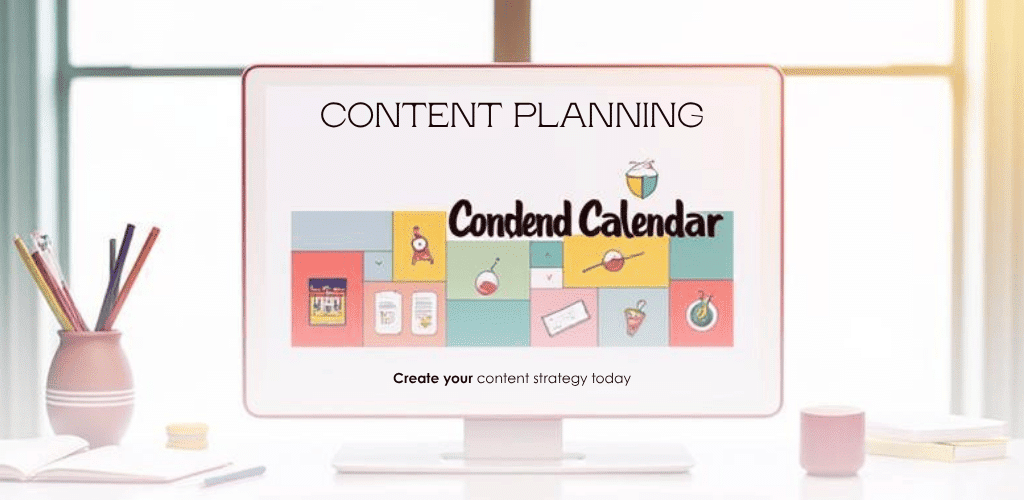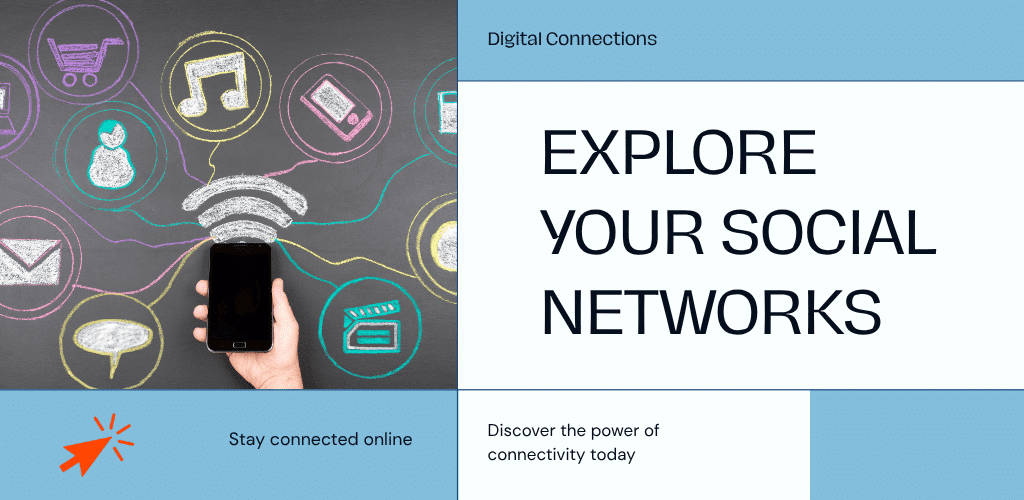Table of Contents
Introduction:
Here’s the thing: content for marketing is the heartbeat of any successful digital campaign. Without useful content, ads and outreach fall flat. Think of content as the bridge between your brand and customers. What is content marketing and why does it matter? How do you create content for marketing that truly engages your audience? What types of content should you focus on? These are the questions we’ll break down in this guide.
In today’s world, content continues to drive SEO traffic, social engagement, and leads. For example, blog posts and videos remain top formats for marketers. Throughout this article, you’ll learn key strategies, examples, and tactics to plan, create, and measure content for marketing success. By the end, you’ll know how to craft a content strategy that boosts brand awareness and ROI in today’s landscape.
Image Prompt: “A diverse marketing team brainstorming around a laptop and notebooks in a modern office — bright natural light, collaborative atmosphere, ultra HD (16:9)”
Key Insight 1 — Why content for marketing matters in 2025:
Content isn’t just words on a page or videos on YouTube – it’s how you build trust and connect with your audience. Instead of hard selling, content marketing offers value and authentic connection. Companies use blogs, social posts, and guides to educate customers, creating a loyal following. Why is content for marketing so crucial? Because today’s customers search for solutions and answers first. In fact, HubSpot research shows 29% of marketers actively use content marketing, and half plan to increase their content budgets.
That’s a huge signal: smart marketers are doubling down on content investment. Content builds long-term ROI, improving SEO and engagement over time. Imagine Nike’s case study videos or a helpful “how-to” blog from a tech startup – both are content pieces that attract interest and leads. Quality content for marketing positions your brand as an authority and fuels every channel from email to social.
What does your audience want to learn? How can content for marketing meet them there? Asking these questions helps prioritize topics. For example, if people often ask, “How to use our product?” a tutorial video or blog becomes a valuable content piece. According to Content Marketing Institute, top performers attribute success to understanding their audience (82%) and creating high-quality content (77%). The tactic? Focus on relevance and storytelling. Answer real questions like a helpful friend would.
Pro Tip:Start with a small content audit: identify your best blog posts or videos. Repurpose those into social snippets or infographics to stretch their impact.
Key Insight 2 — Best content types for marketing success:

What kinds of content should you create? The short answer is: diversify. There’s no one-size-fits-all, but popular formats include blog posts, videos, podcasts, infographics, and webinars. Customers move through stages – awareness, consideration, decision – and different content works at each stage. Search queries like “what content formats generate the most leads?” or “blog vs video for marketing” are common. The good news is marketers have data on this. For example, 92% of B2B marketers use short articles/posts, 76% use videos, and 75% use case studies. Video stands out – 91% of businesses use video in marketing in 2023. Videos catch attention on social and explain products quickly (think YouTube demos). Podcasts and audio are growing too.
Blogs and written content remain essential for SEO. Long-form articles can rank on Google and answer customer questions. For instance, when HubSpot publishes thorough guides, they attract thousands of readers each month. Case studies and whitepapers build trust in B2B marketing, showing real results. Smaller brands can start with blog posts or email newsletters, then branch into video or podcasts when ready. Always match content to your audience’s preferences: if your customers love reading, focus on helpful articles. If they engage with video, try short social videos or YouTube.
Actionable tactic: batch-create a set of content – e.g., one core blog post can be split into an infographic, a short video, and social graphics. This “content atomization” saves time and keeps messaging consistent. For example, a SaaS startup might write a how-to guide and then film a 2-minute demo video of the same topic.
Key Insight 3 — Building a content marketing strategy that converts:

Content for marketing without a strategy is like sailing without a map. You need clear goals: do you want to increase site traffic, generate leads, or build brand authority? Identifying these targets guides what content you create. How do you create an effective strategy? First, define your audience and their pain points. Second, set specific goals (e.g., “increase blog traffic by 20%” or “capture 100 email subscribers from guides”). Third, plan a content calendar around those goals. Small businesses, for example, may start by publishing one high-quality blog per week and promoting it on social media.
Many marketers struggle to measure ROI: 56% say attributing ROI to content is a top challenge. That’s why strategy is key: if you know your goal, you can track it. Top-performing content teams document their strategy – 47% of highly successful marketers have a documented plan. An example strategy could be: publish SEO-optimized blog posts answering common customer questions, supported by weekly how-to videos. HubSpot itself uses an inbound content plan: each blog and video ties into lead gen offers (like eBooks) for measurable conversion.
Quick Win: Define one “pillar” topic and create supporting content. For instance, if your pillar is “email marketing tips,” write an in-depth guide plus shorter blog posts on subtopics, and link them together.
Key Insight 4 — Best channels to distribute content for marketing:

Content is only valuable if people see it. Where should you share your content? Common channels include your website/blog, email newsletters, social media (Instagram, TikTok, LinkedIn, Twitter), and video platforms (YouTube). Each channel has its strengths. For example, LinkedIn is powerful for B2B content, while Instagram Reels may be great for consumer brands. ContentMarketingInstitute reports 89% of B2B marketers use organic social media and 84% use blogs on their site; notably, 85% say LinkedIn delivers the best value. This means distributing a whitepaper on LinkedIn or a blog via email can yield strong results.
Ask yourself: where does your target audience spend time online? If it’s Instagram or TikTok, create short vertical videos; if it’s professional networks, use LinkedIn posts and webinars. Remember SEO: publishing content on your own site helps it rank on Google, drawing “free” search traffic over time. For paid promotion, consider boosting top content on social or via Google Ads. For example, an e-commerce brand might promote its blog post on Facebook to drive traffic, or a B2B company could run LinkedIn Sponsored Content for a case study.
Pro Tip: Adapt content for each channel. A full-length blog can become a series of Instagram tips, a LinkedIn article, and a short video. Tailoring the format (size, length, tone) for each platform maximizes reach.
Key Insight 5 — How to measure content for marketing success:

How do you know if your content is working? Common metrics include web traffic, engagement, leads, and sales. For instance, many marketers (over 41%) measure content marketing success by sales conversion. Web traffic and lead generation are also popular benchmarks. The key is to set clear KPIs. If your goal was email sign-ups, track subscription rates. If brand awareness was the goal, track social shares or direct traffic.
Tracking tools like Google Analytics or HubSpot can link content to outcomes. Tag your content campaigns with UTM codes to see which blog or post drove the most traffic or conversions. Many companies use dashboards: e.g., a SaaS founder might say, “We watch how many trials came from our guidebook content and optimize titles accordingly.” According to Content Marketing Institute, 74% of B2B marketers credit content with generating demand and leads. That’s measurable ROI! If you create an eBook, measure how many downloads turned into qualified leads.
A challenge: 56% of B2B marketers say attributing ROI to content is hard. The solution is consistent tracking. Always include calls-to-action (CTAs) in content (like signup buttons or demo requests) and then attribute responses. Even simple metrics help: average time on page shows engagement, and bounce rate hints at relevance. Start small: choose 1-2 metrics (e.g., sessions and form fills) and watch the trend as you publish more content.
Key Insight 6 — Future trends in content marketing:

Content marketing is always evolving. What’s on the horizon? Personalization and AI tools are big trends. Many marketers now use generative AI to brainstorm content ideas (54% as of 2024) and even draft outlines. For example, tools like ChatGPT or Jasper can speed up research or create first drafts of articles. Later, humans polish and add creativity. The tech isn’t perfect, but it’s a quick win for ideation.
Video and interactivity continue to rise. Short-form video (Reels, TikTok) is now the #1 format for marketers. Think beyond static content: interactive quizzes, polls, or augmented reality ads can engage users in new ways. User-generated content (UGC) is also powerful – encouraging customers to create content (reviews, testimonials, unboxing videos) amplifies authenticity.
Looking ahead, SEO is changing with AI search (e.g., people using voice assistants or ChatGPT for answers). This means content should aim to answer questions clearly. Marketers predict voice and AI search will shape content strategy soon. The key trend: focus on value and creativity. Evergreen content tailored to your niche will always perform. Start experimenting now: try an AI tool to outline a blog post, or film a quick behind-the-scenes TikTok. Stay agile and monitor what your audience responds to.
Quick Win: Identify one new trend to test each quarter. For instance, experiment with a live stream Q&A on LinkedIn or run a micro-influencer campaign. Track results to inform next steps.
Step-by-Step Implementation Guide:

Stage 1: Define Goals and Audience. Begin by clarifying your marketing objectives. Are you aiming to increase brand awareness, generate leads, or boost sales? Who is your target customer? Create buyer personas with demographics, interests, and pain points. This will guide your content topics. Tools: Google Analytics (Free), surveys, and social media insights. Time: 1–2 days. How to set content goals? Ask, for example, “What should our blog achieve?” and document answers.
Stage 2: Content Planning and Research. Outline a content calendar based on audience interests and SEO keywords. Use keyword tools like Google Keyword Planner or Ahrefs to find topics (e.g., “content marketing best practices”). Group ideas into themes or series. Tools: Ahrefs (Paid), SEMrush (Paid), AnswerThePublic (Free/Paid). Time: 1 week for planning. Which topics will engage our audience? Search for trending questions on forums or social media to refine ideas.
Stage 3: Content Creation. Produce the actual content. Write blog posts, design infographics, record videos, or produce podcasts. Use clear, engaging language and visuals. Incorporate your brand voice. Tools: ChatGPT (Free/Paid) for drafts, Grammarly (Free/Paid) for editing, Canva (Free/Paid) for graphics, Premiere Pro or Descript (Paid) for video. Time: 1–2 weeks depending on depth. How do I ensure quality content? Review competitor content and aim to be more helpful.
Stage 4: Distribution and Promotion. Publish on your website and share on chosen channels. Schedule social media posts (using tools) to promote new content. Reach out to influencers or partners to amplify reach. Tools: Hootsuite (Paid), Buffer (Free/Paid), Mailchimp (Free/Paid) for email blasts. Time: Ongoing (daily to weekly efforts). Which channel should I post on? Use analytics to see where your audience is most active (e.g., Twitter vs Instagram).
Stage 5: Analyze and Optimize. After publishing, track performance. Look at page views, engagement metrics, and conversion rates (e.g., form submissions). Use this data to tweak your strategy: update underperforming content, focus more on high-ROI topics. Tools: Google Analytics (Free), Hotjar (Free/Paid) for user behavior, Google Search Console (Free). Time: Ongoing, with monthly reviews. Is this content driving results? Compare metrics before and after updates to measure improvement.
Which digital marketing agency offers the best ROI for bloggers?
There isn’t a single “best” agency that guarantees the highest ROI for bloggers—ROI depends on your niche, goals, budget, and the channel mix you use (SEO, email, social, or paid). Choose an agency that specializes in content + SEO or performance marketing for bloggers, insist on clear KPIs, and run a short paid pilot before signing a long contract.
Who to consider (good starting list):
- Content-focused agencies (best when your priority is organic traffic and long-term SEO): Siege Media is often recommended among top content agencies.
- Full-service agencies that show strong case studies for small businesses and PPC/SEO performance: WebFX and similar firms are commonly listed for measurable results and ROI.
- Agencies / platforms that scale content production (good if you need lots of assets quickly): Pepper (formerly Pepper Content) is repositioning as an AI-native content platform/agency hybrid.
- Small-business / social-first agencies (cost-effective for indie bloggers growing community + social): LYFE Marketing, SmartSites and similar boutique shops are often recommended lists for SMBs.
How bloggers get the best ROI — practical checklist (use this when evaluating any agency):
- Match specialization to goal. If you want organic traffic and affiliate revenue, prioritize content + SEO specialists. If you want fast subscriber or product sales, test performance/PPC agencies.
- Ask for relevant case studies. Request examples from clients in your niche (or close to it) with measurable KPIs (traffic lifts, conversion rates, revenue).
- Set clear KPIs before work begins. e.g., % increase in organic sessions, new email subscribers, cost per acquisition (CPA).
- Run a 60–90 day pilot with defined deliverables. Measure results and only scale if ROI meets your threshold.
- Watch contract traps. There are documented cases of small businesses spending large sums with poor outcomes—clarify exit terms and accountability.
Agencies that match your exact niche and budget, with pros/cons and estimated costs
1) Siege Media — Best for SEO-first, long-term organic growth
Why fit for bloggers: Siege Media specializes in high-quality, SEO-driven content and interactive assets (guides, long-form content, calculators) that compound traffic over time — ideal for bloggers who rely on organic search and affiliate/ad income.
Core services: Content strategy, long-form content creation, interactive content, SEO audits, linkable asset creation.
Typical starting budget: Many campaigns begin in the $6k+/month range for content marketing and can scale higher depending on scope; one-off project pricing and audits are also available.
Pros: Deep SEO expertise, strong creative + design, proven case studies for growth.
Cons: Higher cost than small boutiques; more suited to bloggers who want a sustained organic-growth play.
Best for: Affiliate bloggers, niche publishers, content-first businesses.
Next step: Ask for a proposed “3-month pilot content + SEO” that includes expected traffic/keyword goals.
2) WebFX — Best for full-service and measurable performance
Why fit for bloggers: WebFX is a full-service performance agency with big data/technology capabilities — good if you want content + paid promotion or an agency that connects content to revenue metrics.
Core services: Content marketing, SEO, PPC, conversion rate optimization, email, analytics and reporting.
Typical starting budget: Agencies in this tier commonly operate in $5k–$10k+/month for content + performance services; they publish pricing research showing this range is common.
Pros: Strong attribution/reporting, broad service stack (so you can test paid + organic).
Cons: Larger agency processes can feel less bespoke; costs add up if you layer many channels.
Best for: Bloggers who want to scale traffic quickly and test paid amplification alongside organic.
Next step: Request a tailored performance proposal that ties content work to CPA or subscriber goals.
3) Fractl — Best for viral/content-PR and data-driven campaigns
Why fit for bloggers: Fractl focuses on high-impact, data-backed campaigns and digital PR that can generate big referral traffic and backlinks — useful if you want to build authority quickly or create viral pieces.
Core services: Data-driven content campaigns, digital PR, managed SEO, content libraries, link acquisition.
Typical starting budget: Fractl’s project sizes often start at $50k+ for campaigns (enterprise/large-campaign focus). Smaller pilots may be possible but expect premium pricing.
Pros: Big wins for visibility and link equity; strong case studies.
Cons: Expensive for small bloggers; better suited for campaigns rather than steady blog-post churn.
Best for: Blogs aiming for fast domain authority growth, publishers with funding for large campaigns.
Next step: Ask for case studies in your niche and a scaled-down pilot concept focused on backlinks and referral traffic.
4) Content Harmony — Best for scalable content ops & briefs
Why fit for bloggers: Content Harmony is a content strategy and workflow tool + service that helps teams produce SEO-optimized briefs and scalable workflows — excellent if you want to systemize content production and improve SERP performance.
Core services: Content research and briefs, workflow tooling, content grading, keyword reports (tool + consulting).
Typical starting budget: Tool subscription pricing scales with output — small teams can start at $50–$100+/month for limited workflows; service/consulting add-ons vary.
Pros: Cost-effective, helps produce higher-quality SEO content consistently, great for solopreneurs and small teams.
Cons: It’s a tool + consulting model — less “done-for-you” than full-service agencies.
Best for: Bloggers who want to keep production in-house but improve quality and SEO results.
Next step: Try a short trial or request a sample content brief for a target keyword.
5) Pepper Content — Best marketplace for scalable, cost-efficient content production
Why fit for bloggers: Pepper is a content marketplace/platform (with managed services) that can scale writing, editing, and SEO-friendly asset production quickly — great when you need a steady stream of posts without hiring freelancers individually.
Core services: Content writers, content ops, SEO-ready articles, enterprise Gen-AI features, content lifecycle management.
Typical starting budget: Flexible — you can scale from low-cost per-article options up to higher managed plans depending on quality and volume. Case studies show it supports both small publishers and larger teams.
Pros: Fast scaling, flexible pricing, good for steady publishing cadence.
Cons: Quality varies by writer tier; needs editorial oversight to ensure brand fit.
Best for: Volume-focused bloggers or publishers who want predictable, repeatable output.
Next step: Run a 4–6 article test (mix of pillar + long-tail posts) and measure organic performance after 60–90 days.
6) LYFE Marketing — Best for social + community growth on a budget
Why fit for bloggers: LYFE focuses on social media management and affordable packages for small businesses — suitable if your growth plan leans heavily on social and community building.
Core services: Social media management, paid social ads, content creation, email marketing.
Typical starting budget: Social management packages often start around $750–$1,550/month depending on post volume and channels.
Pros: Lower entry price, quick social growth focus, helpful for community/engagement-driven blogs.
Cons: Mixed reviews on outcomes; may be less strategic on pure SEO-driven content.
Best for: Lifestyle, creator, and community-focused bloggers who want to grow an engaged audience on social platforms.
Next step: Start with a single-channel social pilot (e.g., Instagram or TikTok) plus tracked KPIs (followers, engagement, click-throughs).
Tools & Resources:
- Google Analytics (Free) — Track website traffic and user behavior.
- SEMrush (Paid) — Keyword research and competitive analysis.
- Ahrefs (Paid) — SEO research and backlink analysis.
- ChatGPT by OpenAI (Free/Paid) — Generate content ideas and drafts.
- Canva (Free/Paid) — Create graphics, social media visuals, and presentations.
- Mailchimp (Free/Paid) — Email marketing and automation.
- Grammarly (Free/Paid) — Writing assistant for grammar and style.
- Hootsuite (Paid) — Schedule and manage social media posts.
- AnswerThePublic (Free/Paid) — Discover common search questions and keywords.
- Google Search Console (Free) — Monitor search performance and index coverage.
- BuzzSumo (Paid) — Analyze top-performing content and influencers.
- Unsplash (Free) — High-quality stock images for content.
FAQs:
Q: What is content marketing and how does content for marketing work?
A: Content marketing means creating and sharing valuable content (blogs, videos, guides, etc.) to attract and engage customers, rather than direct selling. Effective content for marketing answers customer questions and builds trust. By providing useful information or entertainment, content marketing guides people toward your products or services over time. It’s about being helpful and authentic, leading to higher brand recognition and conversions.
Q: How do I measure the ROI of content for marketing?
A: To measure ROI, first set clear goals (e.g., number of leads or sales). Then track relevant metrics: for example, use Google Analytics to see how many visitors a blog post drove and how many converted. Assign a dollar value to conversions if possible. Common metrics include traffic, email sign-ups, and sales from content CTAs. Many marketers measure content success through sales and web traffic. Regularly review these stats and compare them to content production costs to gauge ROI.
Q: Which content format is best for marketing: blog posts or videos?
A: Both can be effective, depending on your audience. Video content is highly engaging (91% of businesses use it), but blog posts are great for SEO and detailed explanations. Consider your resources and audience preference. A quick test: check if your audience engages more with video on social or long reads on your site. Often, the best strategy is a mix: a blog post on your site and a short video version for social.
Q: How often should I publish content for marketing?
A: Consistency beats sheer volume. Start with a realistic schedule (e.g., one blog post or video per week). Many top marketers publish regularly to stay on audience radar. Then monitor the results: if one video and one article per week generate leads, maintain or increase that pace. The key is quality — it’s better to publish less often with great content than often with mediocre content.
Conclusion:
Content for marketing is an investment in your brand’s future. By creating useful, engaging content, you attract customers organically and build lasting relationships. We covered why content matters, which formats work best, how to distribute and measure it, and even future trends to watch. Now it’s time to take action. Start small: define your goals and audience, then publish one high-quality piece of content this week. Use the tips and tools above to optimize as you go. Remember, every blog post, video, or infographic is a stepping stone to more traffic and leads. Start optimizing your campaigns with content for marketing today and watch your audience grow and convert.






